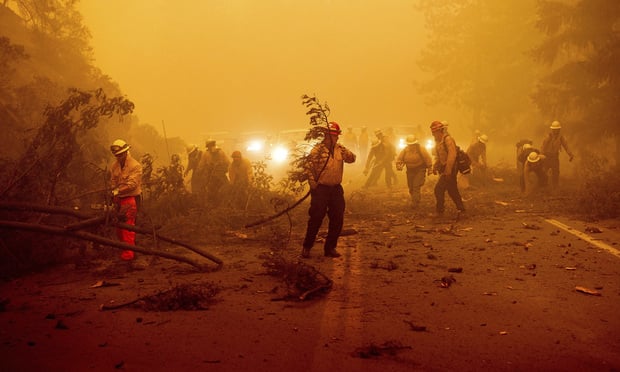 Since most of our wildfires are accompanied by heavy winds, these embers can be blown far from where the main force of firefighters may be situated. If the homeowners are already evacuated, no one is there to call 911 and if the homeowners are there, calling 911 is not a guarantee either. (Credit: Noah Berger via AP)
Since most of our wildfires are accompanied by heavy winds, these embers can be blown far from where the main force of firefighters may be situated. If the homeowners are already evacuated, no one is there to call 911 and if the homeowners are there, calling 911 is not a guarantee either. (Credit: Noah Berger via AP)
In the last five years, the Californian wildfire problem has started to majorly influence the insurance market. The eight largest California wildfires have all occurred since December 2017. Forty-thousand structures have been destroyed and tens of thousands more had soot damage, and according to Mark Sektnan of the American Property Casualty Insurance Association, "Insurers in some cases paid out more than four dollars for every dollar that they took in." And at the end of 2021, we had our first major departure as AIG is no longer offering admitted insurance coverage in California.
Recommended For You
Want to continue reading?
Become a Free PropertyCasualty360 Digital Reader
Your access to unlimited PropertyCasualty360 content isn’t changing.
Once you are an ALM digital member, you’ll receive:
- Breaking insurance news and analysis, on-site and via our newsletters and custom alerts
- Weekly Insurance Speak podcast featuring exclusive interviews with industry leaders
- Educational webcasts, white papers, and ebooks from industry thought leaders
- Critical converage of the employee benefits and financial advisory markets on our other ALM sites, BenefitsPRO and ThinkAdvisor
Already have an account? Sign In Now
© Touchpoint Markets, All Rights Reserved. Request academic re-use from www.copyright.com. All other uses, submit a request to [email protected]. For more inforrmation visit Asset & Logo Licensing.







